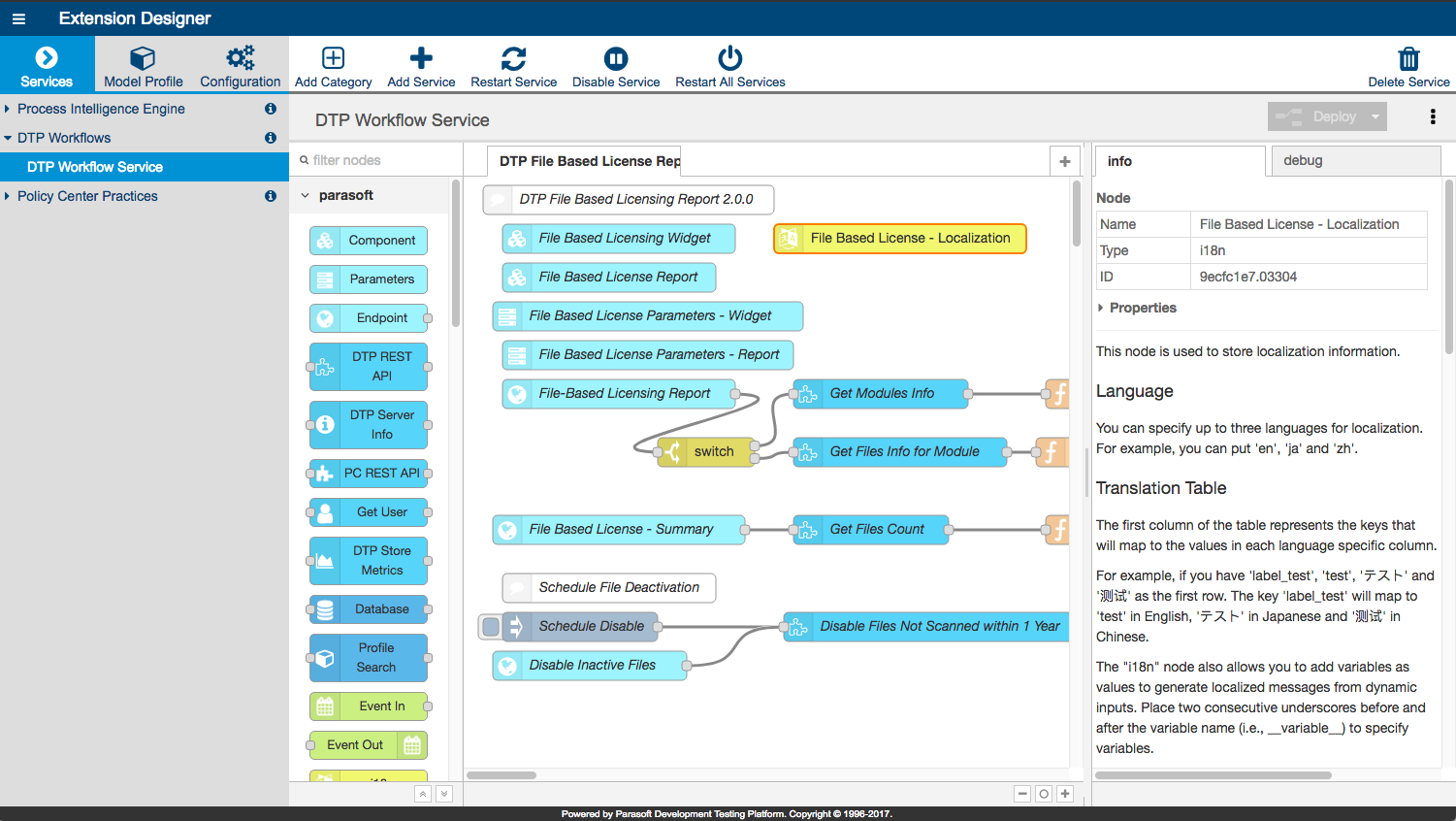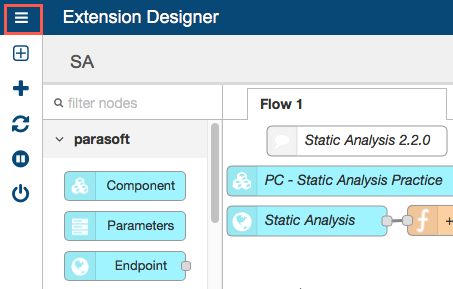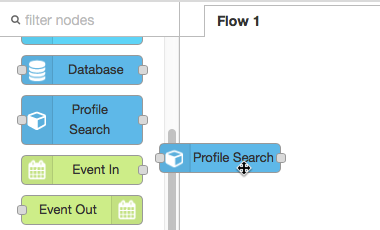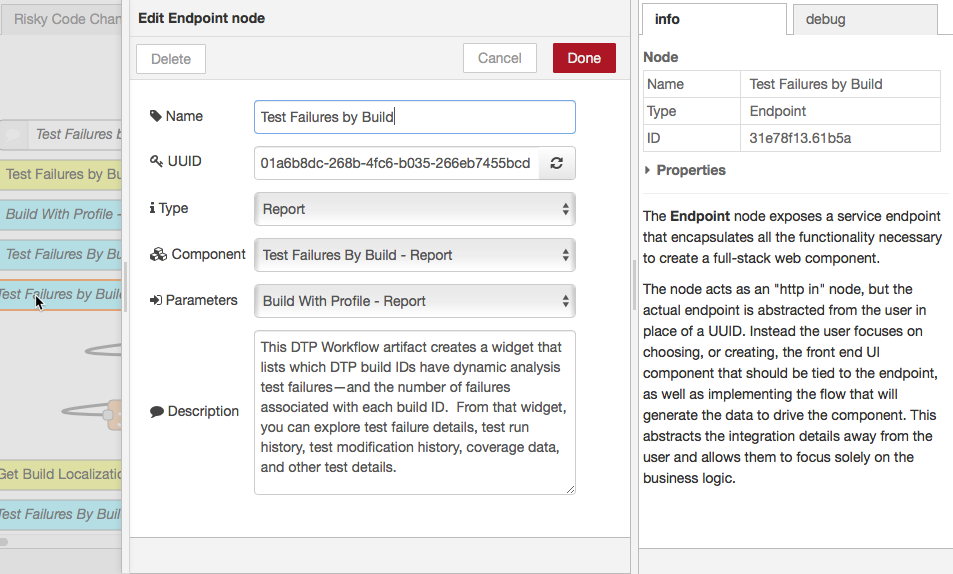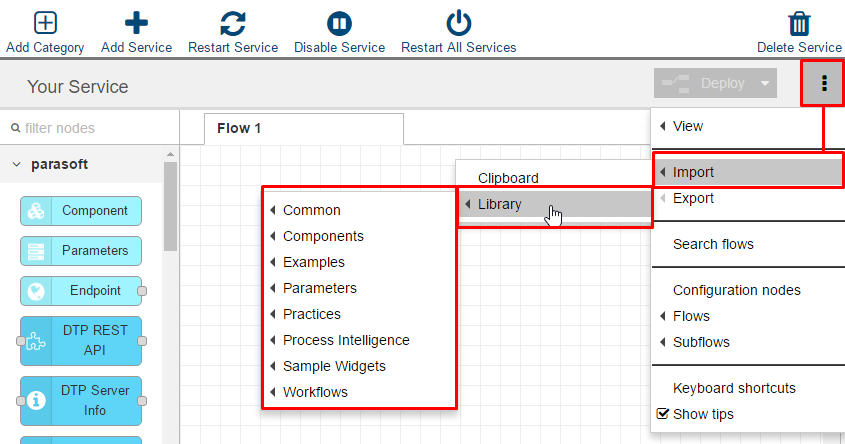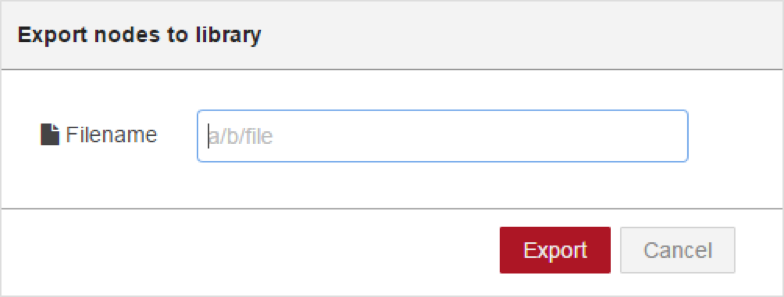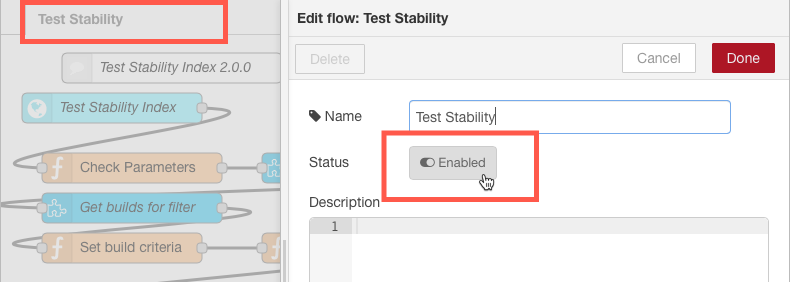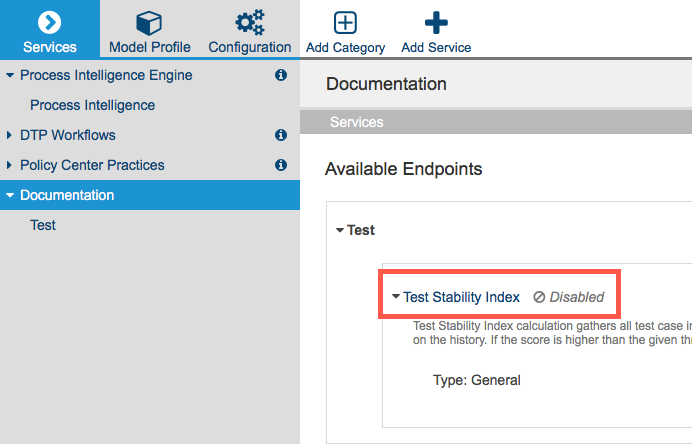In this section:
Overview
Flows are one or more nodes that can perform specialized tasks (see Working with Nodes). Flows are grouped into services to more evenly distribute data processing across endpoints, which results in more stable execution (see Working with Services for instructions on creating services).
There are a few ways to create flows:
- Drag nodes from the parasoft palette on the left into a tab and configure them manually. Different types of nodes have different configuration options. Double-click a node to open the editor and view its functionality.
- Import components, examples, and other pre-built flows into the tab and modify them according to your needs (see Importing and Exporting Flows).
The tabs are a construct for visually organizing flows. You can click the + icon to add more tabs if the tab you're working on becomes difficult to work with. All flows added to the a service will execute when the service is deployed.
You can also minimize the Extension Designer sidebar and use the navigation buttons on the bottom of the tab to zoom out and increase overall visibility.
Creating Flows
You can manually build flows or import prebuilt flows into your service.
Manually Creating Flows
- Click and drag nodes from the parasoft palette on the left into the tab.
- Double-click on the node to open the node editor and configure the node. Different types of nodes have different configuration options, which are documented in the node Info tab. See Working with Nodes.
- When nodes have been added to the tab, you can click and drag input/output points between nodes to chain together their functions into a flow. Flows are stored using JSON for easy sharing and versioning.
You should use Debug nodes to verify functionality as you create your flows. See Debugging Services and Flows.
Importing and Exporting Flows
- Click the menu icon and choose Import> [source] to import workflows/slices a flow from your library or OS clipboard.
The library contains example components shipped with Extension Designer, as well as extensions downloaded and installed from the marketplace. See Downloading and Installing Artifacts for more information. - Configure the nodes in the imported flow according to your needs (see Working with Nodes). You should use Debug nodes to verify functionality as you create your flows. See Debugging Services and Flows.
You can also export a workflow/slice you created as JSON to your OS clipboard or to your artifact library.
Clipboard
- Click the menu icon and choose Export> Clipboard.
- Choose whether you want to export selected nodes, current flow, or all flows, as well as whether the JSON should include line breaks when prompted.
- Click Export to clipboard.
Library
Click the menu icon and choose Export> Library.
Export Flows to Your Own Directories
Flows exported to any of the library directories shipped with Extension Designer (Common, Components, Examples, etc.) will not be restored during a restore or upgrade process.
- Enter a name for the file. You can use forward slashes to nest the file into a subdirectory.
- Click Export to finish.
About the Artifact Library
Artifacts that have been downloaded and installed are stored for use in the Extension Designer library. In addition to storing artifacts, the library also includes commonly used flows, examples, and other building blocks to help you quickly build custom flows and understand how Extension Designer works.
Artifacts are organized into category by type:
- DTP Workflows are stored in the Workflows folder
- Policy Center Practices are stored in the Practices folder.
- PIE Slices are stored in the Process Intelligence folder.
Additional flows shipped with Extension Designer are organized into the following folders:
- Common: Contains all utility flows that you can use to help you build custom flows. It contains useful examples on how to get specific data (build IDs) and how to store metadata in DTP.
- Components: Contains built-in widget components that you can use to create custom widgets and reports.
- Examples: Contains built-in example flows.
- Parameters: Contains built-in widget parameters that you can use to create custom widgets and reports.
- Sample Widget: Contains sample widget flows for reference.
The additional flows contain documentation the describe how to use them. See Extension Designer Tutorials for additional information.
Disabling Flows
You can disable a flow to prevent its endpoint from being called. Widgets associated with the flow are also unavailable in DTP. If a widget has already been deployed to DTP, the widget will show a "No permission or deprecated" message.
- Open a service and double-click the tab containing the flow you want to disable.
- Click the Status button to disable the flow and click Done.
- Click Deploy save the changes to your flow.
To verify that the flow and its endpoint is disabled, click on the service category and expand the Available Endpoint page to the disabled flow.
Next Steps
When flows have been added to your service and configured, you can click the Deploy button to make them available to DTP. See Deploying Services for details.
